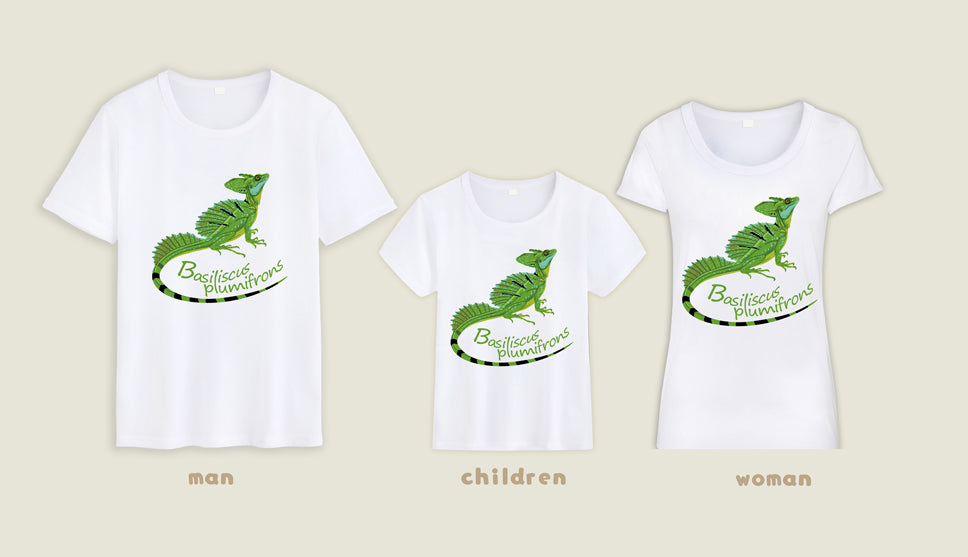Nut Insect Nature Design
T-shirt Basiliscus plumifrons
T-shirt Basiliscus plumifrons
Regular price
$39.80 USD
Regular price
Sale price
$39.80 USD
Unit price
per
Shipping calculated at checkout.
Couldn't load pickup availability
Basiliscus plumifrons, commonly known as the green basilisk or plumed basilisk, is a species of lizard that belongs to the genus Basiliscus. The green basilisk is known for its striking green color and the prominent crest of spines on its head and back. It can grow up to 2 feet in length and can live up to 10 years in the wild.

The green basilisk is native to Central America and can be found in tropical forests, near streams, or other bodies of water. They are diurnal creatures and are known to be excellent climbers and swimmers. The green basilisk is also famous for its ability to run on water, which has earned it the nickname “Jesus Christ lizard”.

Green basilisks are omnivorous and feed on insects, small vertebrates, and fruits. They are also known to be territorial and can become aggressive during mating season.

In terms of life history, green basilisks reproduce sexually and females lay clutches of up to 20 eggs in a nest near water sources. The eggs take around 2 to 3 months to hatch and the young are born fully formed and able to fend for themselves.

Green basilisks are popular in the pet trade but are protected in many countries, with some populations designated as endangered.
Want to know more?
https://www.nationalgeographic.com/animals/reptiles/g/green-basilisk/
https://www.reptilesmagazine.com/green-basilisk-care-sheet/
https://www.thesprucepets.com/green-basilisk-1236744

The green basilisk is native to Central America and can be found in tropical forests, near streams, or other bodies of water. They are diurnal creatures and are known to be excellent climbers and swimmers. The green basilisk is also famous for its ability to run on water, which has earned it the nickname “Jesus Christ lizard”.

Green basilisks are omnivorous and feed on insects, small vertebrates, and fruits. They are also known to be territorial and can become aggressive during mating season.

In terms of life history, green basilisks reproduce sexually and females lay clutches of up to 20 eggs in a nest near water sources. The eggs take around 2 to 3 months to hatch and the young are born fully formed and able to fend for themselves.

Green basilisks are popular in the pet trade but are protected in many countries, with some populations designated as endangered.
Want to know more?
https://www.nationalgeographic.com/animals/reptiles/g/green-basilisk/
https://www.reptilesmagazine.com/green-basilisk-care-sheet/
https://www.thesprucepets.com/green-basilisk-1236744






















